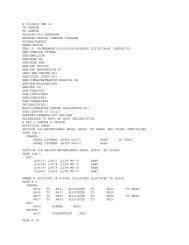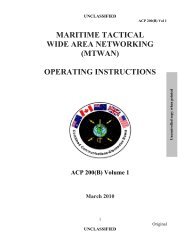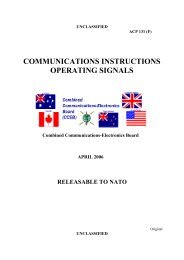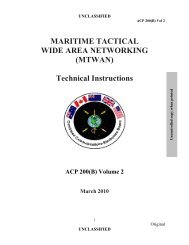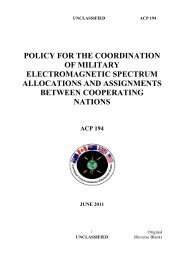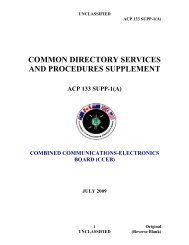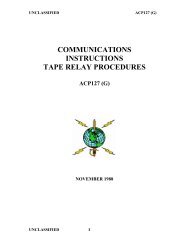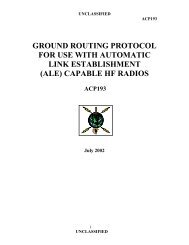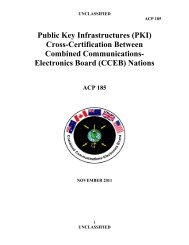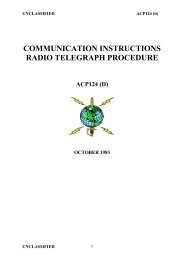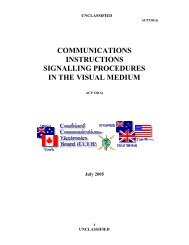ACP 201
ACP 201
ACP 201
Create successful ePaper yourself
Turn your PDF publications into a flip-book with our unique Google optimized e-Paper software.
Uncontrolled Copy When Printed<br />
UNCLASSIFIED<br />
CHAPTER 2<br />
<strong>ACP</strong> <strong>201</strong><br />
E-MAIL<br />
BACKGROUND<br />
<strong>201</strong>. Electronic mail (e-mail) is fast becoming entrenched in operational and business practices<br />
and its use as a convenient communications tool continues to increase. Because e-mail lacks the<br />
formality of traditional <strong>ACP</strong> 127 military messaging, it is often perceived as an informal or<br />
ephemeral means of communication. Formal military messaging has traditionally provided a<br />
reliable and traceable communications system with well-established doctrine for message labeling,<br />
authorizing release and clear identification of the addressees required to take action on the content.<br />
202. As the <strong>ACP</strong> 127 military messaging systems become overburdened and struggle to keep<br />
pace with the demands placed upon them, e-mail offers the user immediacy and direct person-toperson<br />
contact, while still allowing a documented record of the communication. These benefits are<br />
often constrained however, by:<br />
a. a lack of standard operating procedures for formatting, labeling, release and<br />
addressing; and<br />
b. a lack of assurance of reliability, authentication, delivery or response.<br />
203. In addition, the undisciplined use of this tool often results in critical or actionable<br />
information being lost amongst some less important, ‗for information only‘ and conversational e-<br />
mails.<br />
SHORTCOMINGS<br />
204. The use of e-mail as means of military messaging raises a number of concerns that must<br />
be addressed. Appropriate processes must be put in place in order to overcome these<br />
shortcomings.<br />
a. The relative importance of one e-mail over another is not always readily apparent;<br />
b. It is not immediately apparent whether an e-mail constitutes an order, intention,<br />
request or simply provides information;<br />
c. Many e-mail systems do not provide guaranteed delivery or acknowledgement of<br />
delivery;<br />
d. E-mail systems rarely offer non-repudiation without the use of additional<br />
authentication or encryption systems;<br />
e. It is not always easy to determine the occasions on which e-mail should or should<br />
not be used;<br />
2-8 Original<br />
UNCLASSIFIED<br />
(Reverse Blank)



